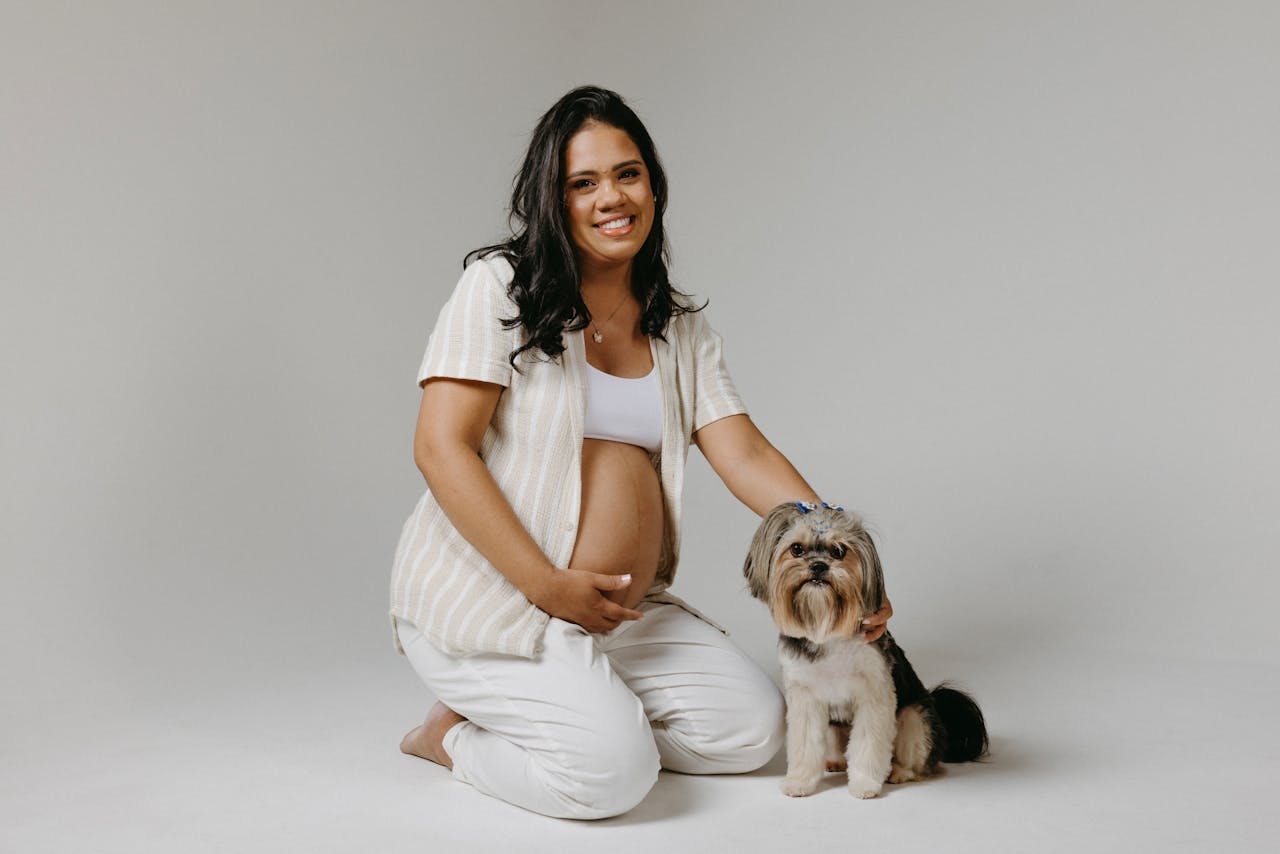When I was getting ready to bring my first baby home, I wanted to make sure my dog Emily, my loyal sidekick, was prepared for this big change, too. Before I left the hospital, I gave my husband a small blanket to take home—a blanket that carried our baby’s scent. When I finally brought our little one home, Emily was so excited and curious. She sat beside his cradle, watching over him like a gentle guardian, and she didn’t want to leave his side. They became the best of friends for the next decade until she passed away 💔.
10 Ways To Prepare Your Dog For A New Baby
For anyone welcoming a baby into a home with a dog, preparing your dog can help make this transition smoother for everyone. Here are some steps to help your dog adjust to this big change. Welcome your new addition with open paws.
1. Introduce Baby’s Scent Early
Dogs rely heavily on scent, and giving them an early introduction to your baby’s smell can help ease the transition. You can do this by having someone bring home an item from the hospital that smells like the baby—a hat, blanket, or onesie works well. Let your dog sniff the item while providing praise or gentle reassurance, reinforcing that this new scent is a positive addition to their world.
2. Gradually Adjust the Routine
Dogs are creatures of habit, and a new baby can mean a big change in the daily rhythm. If you’ll be modifying your dog’s feeding, walking, or playtime routine after the baby arrives, start making gradual adjustments now. For instance, if walks will happen earlier in the day, start shifting your routine so your dog isn’t surprised by the sudden changes. A predictable routine, even if it’s a new one, can help your dog feel more secure when the baby comes home.
3. Reinforce Basic Commands
Having a few solid commands like “sit,” “stay,” and “go to your spot” can be invaluable when you need a little extra space for baby care. Practicing these commands ahead of time, and reinforcing them with treats and praise, will make it easier to guide your dog when the baby is around. These commands will give your dog clear directions, creating boundaries while still making them feel included.
4. Set Up a Safe Space for Your Dog
With a newborn around, your dog might need a break from the activity, noise, and new smells. Designate a comfortable spot that’s just for them, somewhere they can retreat to if they need a little downtime. This might be a cozy bed in a quiet room or a favorite blanket in a designated corner. Encourage your dog to use this space so they feel safe and relaxed whenever they need it.
5. Reward Calm Behavior Around Baby Items
As you set up the nursery, let your dog explore and sniff the new items under your supervision. Reward calm and gentle behavior around the baby’s crib, blankets, and toys. By familiarizing them with these items now, you’ll help minimize curiosity-driven exploration later, when your attention is focused on the baby.
6. Get Your Dog Used to New Sounds and Smells
Babies bring a lot of new sensory experiences into the home, from crying and cooing to the smell of baby lotion and powder. You can play recordings of baby sounds at a low volume, gradually increasing it so your dog gets used to hearing them. Try using baby products in the house beforehand so your dog can adjust to the scents.
7. Introduce Your Dog to the Baby Gradually
When you finally bring your baby home, try to keep things calm and unhurried. Let your dog greet you first, giving them a moment to adjust to you being home. Then, gently introduce them to the baby at a distance, observing their reaction. Keep the meeting short and positive, and allow your dog to sniff the baby from a safe distance, offering treats or praise to reinforce their calm behavior.
8. Watch for Stress Signals
Bringing a baby home can be a big change for your dog, and it’s important to recognize signs of stress. Watch for behaviors like excessive panting, drooling, or pacing, as well as subtle cues like lip-licking or yawning in situations that aren’t naturally relaxing. If your dog seems stressed, give them some time in their safe space or go for a brief, calming walk.
9. Make Time for Your Dog
Amid the excitement of caring for a new baby, it’s easy for your dog to feel overlooked. Try to carve out a few minutes each day for one-on-one time with them. This could be a quick walk, some playtime, or just sitting together for a quiet cuddle. A little bit of attention goes a long way in helping your dog feel secure and loved, even with the new family member around.
10. Stay Patient and Positive
This transition is an adjustment for everyone, and your dog may take time to fully adapt. By staying patient and keeping interactions positive, you’re setting up a strong foundation for a healthy relationship between your dog and your baby.









